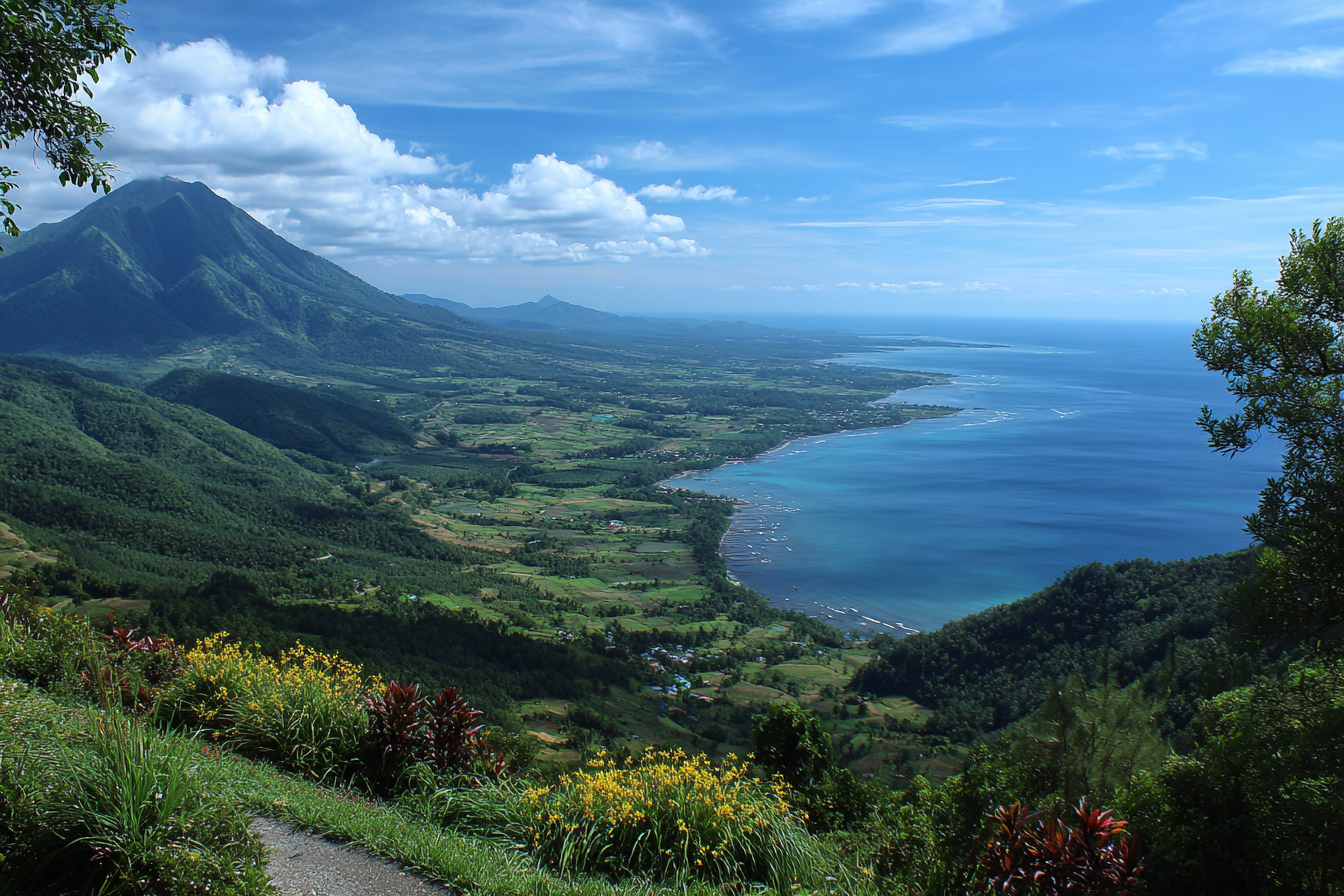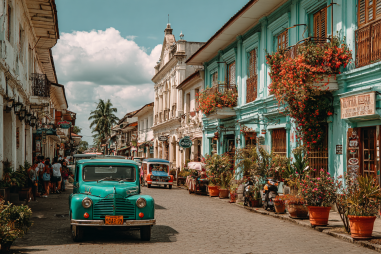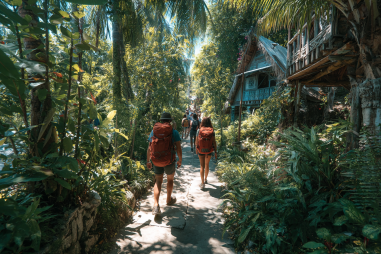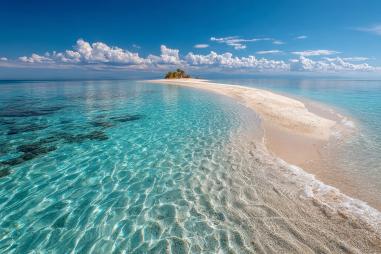Planning a trip to Camiguin Island requires a good understanding of its weather conditions to make the most of your visit. This tropical paradise in the Philippines boasts lush landscapes, beautiful beaches, and exciting hiking trails, all of which are best enjoyed under favorable weather. To help you prepare, this guide will walk you through Camiguin’s climate, seasonal weather patterns, temperature and rainfall trends, potential weather risks like typhoons, and offer practical advice on the best times to visit and what to pack. Let’s dive into everything you need to know about Camiguin Island weather before setting off on your adventure.
Overview of Camiguin’s Climate
Camiguin Island enjoys a tropical climate typical of the Philippines, characterized by warm temperatures and significant humidity throughout the year. Given its location near the equator, the island doesn’t experience much variation in temperature, making it generally warm and inviting for visitors year-round. The climate can be divided primarily into two seasons: the dry season and the rainy season. Temperatures usually range between 25°C to 32°C (77°F to 90°F), providing a warm backdrop for outdoor activities whether you’re hiking one of the island’s volcanoes or lounging on its pristine beaches.
Dry and Rainy Season Explained
Understanding the dry and rainy seasons is essential when planning your trip to Camiguin. The dry season typically runs from late November to early May. During these months, you can expect minimal rainfall, clear skies, and plenty of sunshine — ideal conditions for sunbathing, swimming, and hiking. This season coincides with the northeast monsoon, which helps keep the weather relatively stable and dry.
On the other hand, the rainy season lasts from June to November. This period is marked by increased rainfall, often in heavy but short bursts, and occasional thunderstorms. The southwest monsoon dominates during these months, bringing moist air and frequent showers. While the rains contribute to the island’s lush, green landscapes, they can also cause disruptions to outdoor plans, including slippery hiking trails and rough seas.
It’s worth noting that the shoulder months at the beginning and end of both seasons might have unpredictable weather, with intermittent showers appearing even during the dry season or occasional sunny spells in the rainy months.
Monthly Temperature and Rainfall Data
Getting a grasp of monthly weather trends will help you narrow down your visit to the time that suits your plans best:
- January to March: These months are some of the coolest and driest of the year. Temperatures hover around 25-30°C (77-86°F) with low humidity and very little rain, making this a favored time for travelers.
- April to May: These are the hottest months, with temperatures climbing up to 32°C (90°F) or more. April can be quite dry, but May signals the start of more humid conditions, so be prepared for occasional showers.
- June to October: This period marks the rainy season, with July and August generally receiving the most rainfall. Monthly rainfall can go over 200 mm (7.8 inches), so it’s advisable to carry waterproof gear if you travel at this time.
- November to December: Rainfall starts to decrease, and the weather becomes more pleasant again. Although occasional showers may still occur, these months are popular for visitors aiming for good weather and fewer crowds.
Overall, the average temperature stays fairly consistent, but rainfall varies significantly, affecting what activities are suitable on different days.
Effects of Typhoons and Weather Risks
While Camiguin Island is generally less affected by typhoons than other parts of the Philippines due to its location, it’s not exempt from the broader weather patterns that affect the region. Typhoon season coincides with the rainy season, particularly from June to November, and can occasionally bring strong winds, heavy rainfall, and dangerous seas.
Travelers should stay informed about weather updates during this period and understand that sudden weather changes can impact travel plans. Check local advisories and heed warnings when typhoons are forecasted, as even smaller storms can cause flooding and landslides, especially in mountainous areas where the hiking trails are located.
Other weather risks include occasional rough seas during the stormy months, which may affect ferry schedules or water-based activities. If you plan to visit during the rainy season, always prioritize safety and have flexible arrangements.
Best Time for Hiking and Beach Activities
Camiguin Island’s natural beauty is best explored in dry and relatively calm weather. For hiking enthusiasts, the months from January to May offer the best conditions. Trails such as those to Mt. Hibok-Hibok or the Katibawasan Falls are more accessible and safer when the ground is dry. Visibility is also better for panoramic views and wildlife spotting.
When it comes to beach activities like snorkeling, diving, or simply relaxing by the shore, dry months also reign supreme. The waters are clearer and calmer, making it perfect for exploring marine life or island hopping. November through May is considered the prime beach season.
While surfing is less common on Camiguin compared to other Philippine islands, those interested in water sports should avoid the rough seas during the rainy months.
Packing Tips Based on Seasons
Packing smartly according to the season will enhance your Camiguin experience. Here are some practical suggestions:
- Dry Season (November to May):
- Light, breathable clothing such as cotton shirts and shorts.
- Sun protection essentials – sunscreen, hats, sunglasses.
- Comfortable hiking shoes or sandals for exploring.
- Swimsuits and beachwear for water activities.
- A light jacket or sweater for cooler evenings, especially in January and February.
- Rainy Season (June to November):
- Waterproof clothing and sturdy rain jackets.
- Quick-drying clothes and extra pairs of socks.
- Waterproof bags or covers for your gadgets and belongings.
- Insect repellent to combat the increased presence of mosquitoes.
- Rubber boots or shoes with good grip for muddy or slippery paths.
No matter when you visit, it’s a good idea to bring a basic first-aid kit, reusable water bottle, and insect repellents to stay comfortable on the island.
Local Weather Resources
Staying updated on Camiguin’s weather during your trip is crucial, especially if you plan outdoor adventures. Here are some reliable resources to keep you informed:
- Philippine Atmospheric, Geophysical and Astronomical Services Administration (PAGASA): The official source for weather forecasts, typhoon alerts, and climate information in the Philippines.
- Local tourism offices and accommodation providers: They often provide day-to-day weather updates and advice tailored to activities in Camiguin.
- Weather apps and websites: Popular platforms like Weather.com, AccuWeather, and Windy offer hourly and longer-term forecasts, radar images, and real-time alerts.
- Social media groups and travel forums: Fellow travelers and locals frequently share recent weather conditions, especially useful for last-minute changes.
By consulting these resources regularly, you can adjust your itinerary accordingly to have the safest and most enjoyable experience on Camiguin Island.
Planning Your Trip Around Camiguin Island Weather
Overall, your ideal time to visit Camiguin depends on what activities you prioritize and your tolerance for weather unpredictability. If you want clear skies and stable conditions perfect for hiking volcanoes, exploring waterfalls, or beach relaxation, aim for the dry months between late November and May. For budget travelers or those interested in experiencing the island’s lush green landscape at its peak, the rainy season offers fewer crowds and vibrant nature, but you should be prepared for frequent showers and possible disruptions.
By understanding Camiguin’s weather patterns, factoring monthly temperature and rainfall, and preparing for possible typhoon threats, you can make informed decisions on when to visit and how to pack. This ensures your trip to Camiguin Island is both memorable and comfortable, allowing you to fully immerse yourself in the beauty and adventure this unique destination has to offer.







